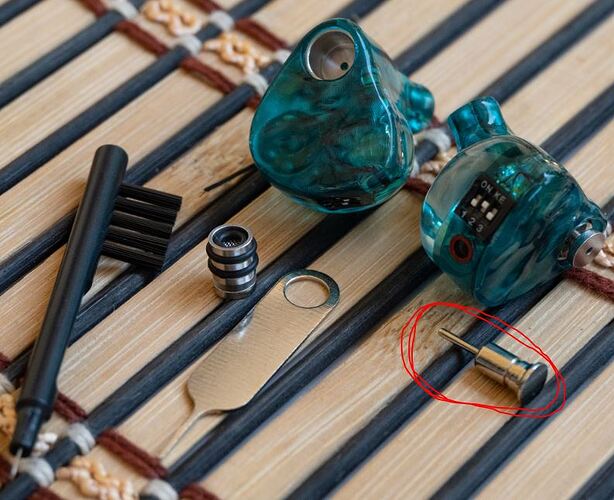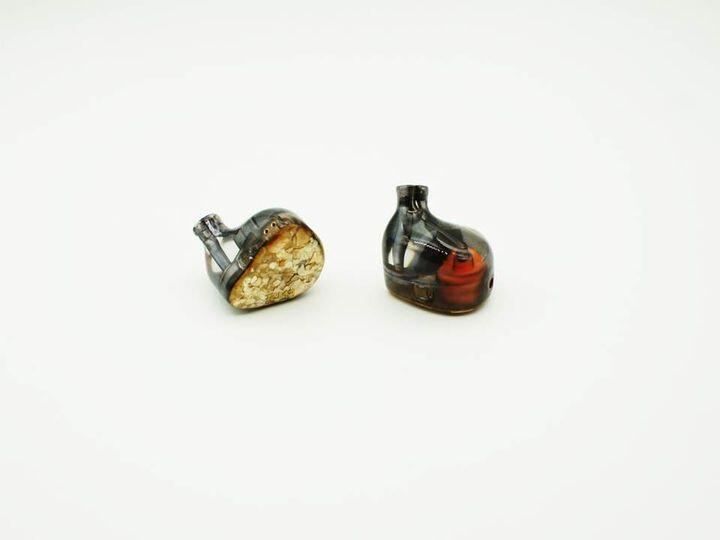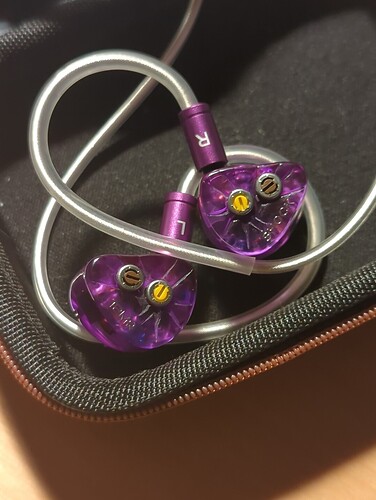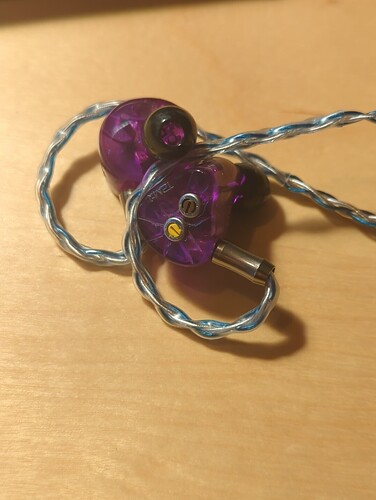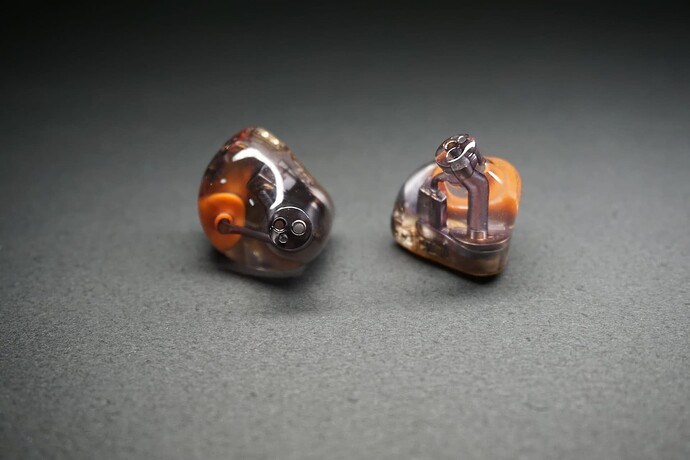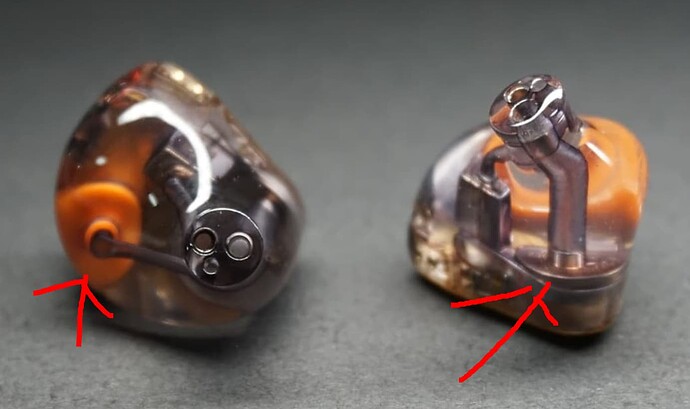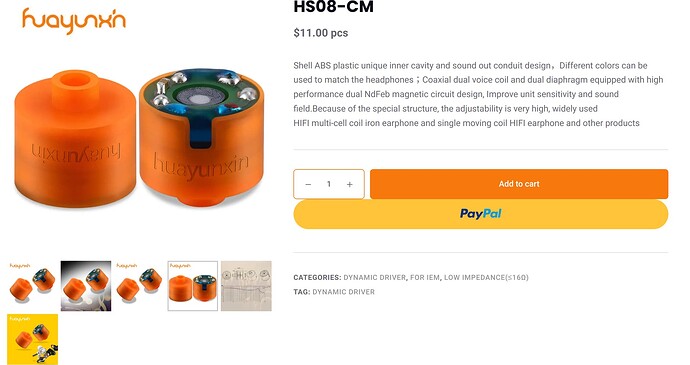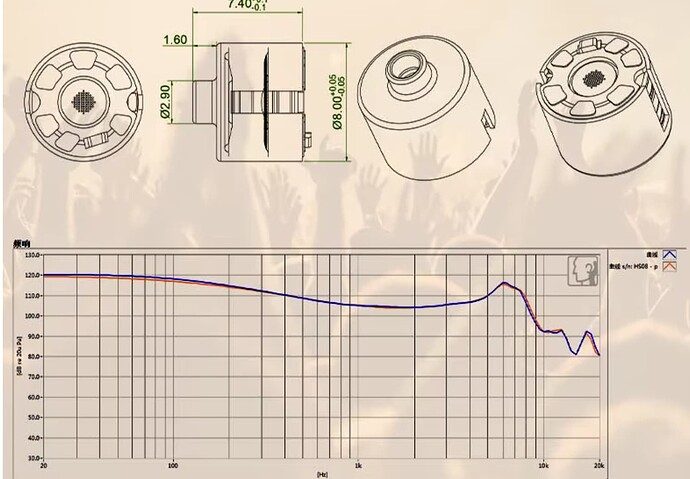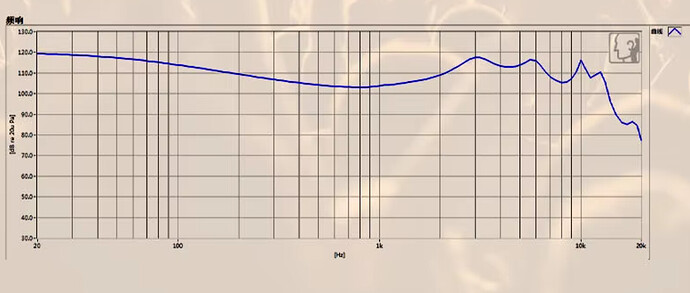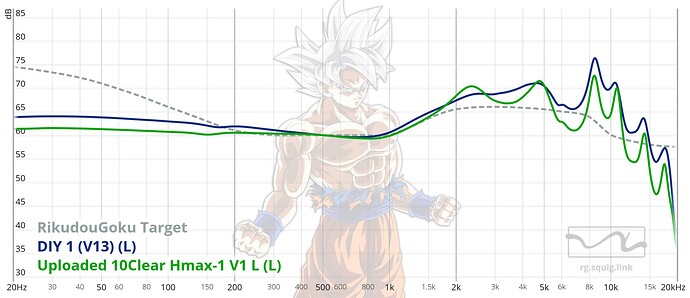Just a guess based on the Fan 2 and TSMR X, I’d guess that the shock will be a bit more V shaped compared to the Fan 3. And of course it will have the adjustability of the two dials (variable resistors in the crossover, to adjust bass and treble).
for now I’m chilling
if they’re really really good then I might consider it but for now they’re on permanent backburner
Hi guys.
Tell me why this tool is needed in the kit?
In Russia, one person suggested that it should be inserted into the film slow pressure driver and pierced, and then the internal filters should be changed and even additional cotton wool filters should be inserted there. He called this filter activation and that the filters are not activated from the factory.
What do you think about this?
I would not puncture anything unless you’re prepared to do some serious filter modding to get the sound to your preferences. It is certainly not the intention from TSMR that it will be used to puncture anything. Not sure exactly what it’s supposed to be used for actually. Cleaning something?
That looks similar to me (I may be wrong) to 3.5mm port blockers to keep dust out.
I don’t know if the center pole is necessary for centering it or just there to use as a sim/microSD card remover as a bonus feature.
EDIT: I remember years ago (around 2014) you could get little clicky switches that would sit in the 3.5mm jack and you could use an app to choose what functionality it had for your Android phone (turning on flashlight, launching camera, pause/play music, etc.) Pretty awesome idea.
hmm, arent those usually rubber? Dunno if metal is a good idea.
TSMR ARMOR
2 Dynamic Driver + 2 Balaned Armature + 1 Electrostatic Driver
At the right price, this could be a really interesting one. Looking forward to seeing what the tuning’s like and what the three switches do. I hope the switches are (bass, mids, treble) and not (bass, bass, bass) like the X.
By the looks of it, the two DDs are separate and run to different channels in the nozzle so they should be covering different parts of the spectrum (subbass and midbass? Bass and mids?), rather than the hollow-coaxial DDs we see in the X or face-to-face ones like in the Ziigaat or ISN IEMs.
This one got a bit long ![]() I’ve spent a couple of weeks listening to the Tansio Mirai TSMR Shock, a $600 USD IEM with dual 8mm dynamic drivers, four balanced armatures, and two bone conduction drivers. The driver configuration appears to be the exact same as the TSMR X ($400), with the addition of two Sonion bone conduction drivers and adjustable dials for bass and treble, replacing the TSMR X’s bass-only switches. It has an impedance of 10 ohms and sensitivity of 102dB/mW at 1kHz. I enjoy the X, which I’ve owned for a 8 months, so my expectations were high. Thanks to the AudioGeek EU tour group for the opportunity to try this one!
I’ve spent a couple of weeks listening to the Tansio Mirai TSMR Shock, a $600 USD IEM with dual 8mm dynamic drivers, four balanced armatures, and two bone conduction drivers. The driver configuration appears to be the exact same as the TSMR X ($400), with the addition of two Sonion bone conduction drivers and adjustable dials for bass and treble, replacing the TSMR X’s bass-only switches. It has an impedance of 10 ohms and sensitivity of 102dB/mW at 1kHz. I enjoy the X, which I’ve owned for a 8 months, so my expectations were high. Thanks to the AudioGeek EU tour group for the opportunity to try this one!
More on the tuning dials in my end-notes, I’ll get to the point with my sound impressions using the settings I landed at: ~4.3 for bass and 3 for treble (higher numbers = more bass/treble). Is this an upgrade from the TSMR X? Yes, absolutely: the mids are clearer, separation is better, and the bass is more clear/defined. To my ears though, they’re quite different tunings: I can’t adjust the Shock to resemble the TSMR X in “Balanced” mode (switches in 010). In the grander scheme of things, they may be similar, but side by side I experienced the tunings as fundamentally different, despite the tuning dials.
Compared to the TSMR X, the Shock fills in the mids very nicely. The mids, especially the low mids, are recessed on the X making for a somewhat relaxed and bass-focused listen with the upper mids and treble to balance it out. Here with the Shock, the mids play a much more prominent role, and display great separation between instruments and vocal tracks - something I’ve noticed with other BC sets (BQEYZ Wind). In longer listening sessions, there was something with the upper mids or low treble that was just a bit fatiguing, but it’s hard to put a finger on.
The bass is great, and sounds more tight and controlled than the X. It’s got nice physicality, though the subbass isn’t as prominent as on the X, it doesn’t bring quite the same rumble. See my end-notes on adjustment for more on that.
The treble complements the mids nicely, but doesn’t have much air, or sparkle. I think I’d appreciate a bit more emphasis there relative to the upper mids/low treble, and turning up the treble dial didn’t quite do it for me.
Isolation is less than than on typical IEMs like the Ziigaat Estrella, and the bone conduction drivers leak more sound than typical IEMs. This might be a dealbreaker for people listening in an office environment at higher volumes. The 6.4mm nozzles worked well with various tips; I landed on Moondrop Springtips M and Penon Liquer Black S. The shells stick out slightly more than the TSMR X but are equally comfy in my ears (nozzles on the short side, but a good fit for me).
Overall, the TSMR Shock offers impressive bass, nicely separated mids, and a highly customizable tuning. I prefer it over my TSMR X. I think these are a great set at the price, even though the tuning could be a better fit for me in the aformentioned areas. If you’re looking for a slightly mids-forward set and comfortable with fiddling to find the right tuning for you, these are easy to recommend. I look forward to experimenting with these some more, and testing out Timmy’s EQ suggested settings!
End notes on adjustment:
I found it a bit tricky to dial in the sound. You have a lot of flexibility, but that’s both a blessing and a curse. A helpful image from -rowan- on Head-Fi greatly clarifies the dial settings, check that out here. The turning up the bass dial past 4.5 resulted in serious bass bleed into the mids for me, so although I wanted a little bit more subbass, I had to stop at 4.3. The treble was a little counter intuitive, since I found turning up the treble actually helped balance out the upper mids. The dials won’t do much to change the mids, so I couldn’t dial in the mids-treble balance that I was wanting (a bit more air relative to the upper mids and treble).
The Shock offers a lot of adustability, but you can’t do much to adjust the character of the upper-mids/low treble (ear gain region). Ineras over on Head-Fi put up some great plots that give a sense of what’s possible range, check them out here; DynamicEars, and Timmy/DucBloke too! Thanks to all those guys for sharing!
Some people (aformentioned head-fier’s) have been experimenting with filters over the mids tube to lower the mids a bit, and I can understand where they’re coming from with that. Might be just enough to bring the mids into “prefect” territory. Really though, it’s a nitpick for me… I enjoy the Shock a lot even as is.
Channel balancing is a fundamental challenge with dials, as hinted at by one of Timmy’s measurementss. No way around that unless you have a coupler to adjust. For that reason I actually prefer switches, but you trade off the flexibilty of the dials. It’s hard enough to get matched resistors for the left and right sides (as used with switches), not to mention potentiometers (dials). This isn’t a huge deal in practice though, I found the sound and stereo imaging to be good despite this. It does nag at me in theory though.
Apparently, $290 according to headfiers. I wonder what that non-Sonion single EST is. @Rikudou_Goku you seen drivers like that around before? Must be the one with the wide nozzle bore. It’s circular and seems to be bigger in diameter than the 8mm dual-DD.
TSMR ARMOR
2 Dynamic Driver + 2 Balanced Armature + 1 Electrostatic Driver
5 drivers Hybrid Audiophile IEMS
3-way crossover , 3 channels
Low frequency: 2 8mm hollow coaxial dynamic carbon element hybrid diaphragm drivers
Mid-frequency: 2 Knowles Balanced Armature
High frequency: 1 Electret Electrostatic Driver
Impedance: 11 ohm
Sensitivity: 103dB
Frequency response range: 10~45kHz
If its either of those 2, then it looks more like an MST (magnetostatic driver) which is NOT an electrostatic driver, KZ has used MST drivers before and so have Shuoer (Shuoer got theirs from Earbridge, a Korean company) (neither is the Sonion models as they are electret based but they are at least closer to a real electrostatic driver).
Yeah, the thin bore is almost definitely the dual bass driver, so it should be the one on the right. Oh, cool, thanks for the link!
Hmm, I also suspected it might be something other than a “sonion-like” EST, which at least requires the transformer.
Isn’t an MST just a planar? Or am I missing something here?
Them saying explicitly that it’s an “electret” est does make me wonder though.
No, MST is Magnetostatic, it is different from a planar.
A lot of marketing (fraud at worst) calls their Electret based driver “electrostatic” which is completely WRONG. Likely using the fact that most people probably just assume Electret = Electrostatic and Electrostatic is the higher end one that is what people usually want.
Judging by the dual DD graph from the OEM, it is quite the bassy driver and has lots of mid-bass. Expect to see a big bass shelf along with a lot of upper treble on this set, if they havent completely changed it.
For referrence, here is a random DIY i made with this driver
V1 is untuned/stock, bass shelf is likely gonna vary a lot depending on the shell so other than that their graphs are fairly accurate.
Awesome, thanks for the info! I’ve enjoyed the dual-coxial drivers in the TSMR X and Shock, they can bring big bass shelf so it’ll be interesting to see how it all comes together with their crossover and if they manage to get some nice air extension with that MST.
Still haven’t quite grasped the operating principle of the magnetostatic vs planar or est … trying to read up on it now. With an EST the stators are charged plates. With a planar they’re the magnets. MST… ![]()
Dunno what they use but if they used Huayunxin drivers before on them then it should be fairly similar as their drivers tend to sound very similar (they have their house sound so to speak).
That MST driver has quite a lot of upper-treble (10-20khz) so should be very airy set along with a decent amount (not basshead quantity) of bass quantity that has a more focus on the quality.
I dont really know much there either but all of those are different for sure.
With Planars you also have some other variations that are hard to call them a real planar with those smaller round or square shaped ones which are kinda DD-like and then there are those BA-looking ones.
Hi everyone, I hope you don’t mind me bumping this thread.
I just discovered Mirai X Anniversary. I was dead set on getting Xenns Mangrid Tea Pro during 618 sale, but now I am also considering getting TSMR X instead.
For those of you who have used Mirai X for a while, putting Penon drama aside- do you think they’re worth 400$? How would you rate this set against TP?
I would appreciate any input.
I haven’t heard the top pro, but it seems like quite a different tuning from the X. I’ve owned X for a year. It’s more of a V shaped set. It’s very fun, bassy, engaging. The subbass is some of the best I’ve heard at any price point, very fun rumble. Male vocals tend to take a step back in the mix though, they are a bit recessed.
Just based on the measurements, the top pro should be a much more balanced tuning.
I have other more expensive items I use now, so I’m actually going to sell my X. Let me know if you’re interested.
I still have X but I think that today I would look somewhere else - like HBB Punch or that new Punch Audio. The more I go through IEMs the more I consider TSMR X as 80% pure bass experience and 20% everything else. It all boils down to what you look for but I personally wouldn’t pay $399 for it again today.
